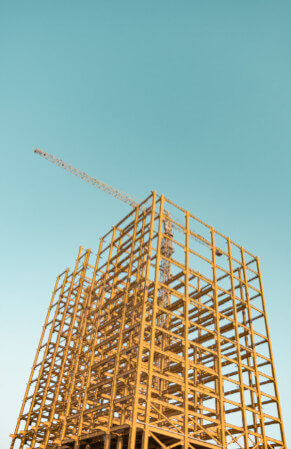
Has Call 811 left you high and dry, or worse – on the receiving end of a utility strike or near miss? Two recent studies say the national utility locating system is riddled with $61 billion in waste and significant process flaws, including inaccurate line marking and slow response times.
The recent study commissioned by the Infrastructure Protection Coalition took an in-depth look at 811 operations in every state and Washington D.C. and found the waste and excess costs are creating unnecessary hazards for public safety.
The worst offenders – Arkansas, Florida, Georgia, Michigan, Missouri, Wisconsin, and the District of Columbia – account for more than 20 percent of the national waste due to lax policies and procedures. In some instances, states did not even require mandatory reporting of damage to utility lines.
Waste and cost overruns largely were caused by:
Utilities and third-party locators needlessly sent out to locate lines for construction projects that then do not happenPoor instructions given to locators, causing wasted time or additional workLocate marks destroyed by construction and then needing to be reinstalled Contractor wait time when location efforts exceed the legal notice period
A separate survey conducted by the Associated General Contractors of America had similarly alarming results. Ninety-nine percent of contractors surveyed were familiar with the 811 system and the requirements before excavating, but 73 percent reported weaknesses in the 811 processes.
Respondents cited the lack of accurate utility locating by utility owners and operators as the biggest problem. In addition, 56 percent of firms with concerns about the 811 system said slow utility owner and operator response times were a significant weakness.
The two largest causes of utility line strikes and near misses are unmarked or mismarked utility lines (53 percent) and the failure of utility firms to properly mark their lines within the required amount of time after 811 has been contacted (25 percent).
Many contractors reported being unfairly blamed for damages even after contacting 811. Indeed, the survey showed nearly two-thirds of contractors reported receiving a claim from a utility owner and operator for damage to a line the construction firm was not responsible for damaging.
Industry Leaders Sound Off
Industry association leaders voiced their disappointment in the utility location system and the dangerous position it puts contractors and community members in.
“Construction firms are doing their part to avoid hitting utility lines, but the current 811 system appears to be badly flawed,” says AGC CEO Stephen E. Sandherr. “Fixing the 811 system will go a long way in protecting the safety of construction crews and the communities near these utility lines.”
“Ultimately, ratepayers are picking up the tab for this waste and bearing the public safety risk. Some states have figured out how to work this system safely and efficiently, and there’s no reason others cannot do the same,” says Power & Communication Contractors Association CEO and Infrastructure Protection coalition member Tim Wagner.
The studies come at a critical time for the nation’s infrastructure, as trillions of dollars will be funneled into new projects with the passage of the infrastructure bill. That means tens of thousands of miles of new highway, bridge, road, broadband, and water and sewer infrastructure construction, all of which will be near existing underground utilities.
Fixing the Broken System
So, what’s the solution? An overwhelming majority of AGC survey respondents (98 percent) want contractor representation on local 811 center boards of directors. Many respondents also urged all utility firms to be required to participate in the 811 process. Ninety-one percent of firms added they already conduct training with their employees on how to use, and comply with, local 811 requirements.
The Infrastructure Protection Coalition study found excessive costs and risks could be reduced if states with the worst records adopt more effective practices and procedures already in use in other parts of the country.
The Infrastructure Protection Coalition is a group of associations representing broadband, electric, natural gas, pipeline, transportation, sewer, and water industries. They are regular users and stakeholders of the 811 system.
Associated General Contractors of America represents more than 27,000 construction contractors and industry-related companies. The 811 survey was conducted in late August and September. Five hundred twenty construction firms responded to the survey, representing virtually every type of excavation activity in the industry.
Did you miss our previous article…
https://www.3555pacific.com/?p=622